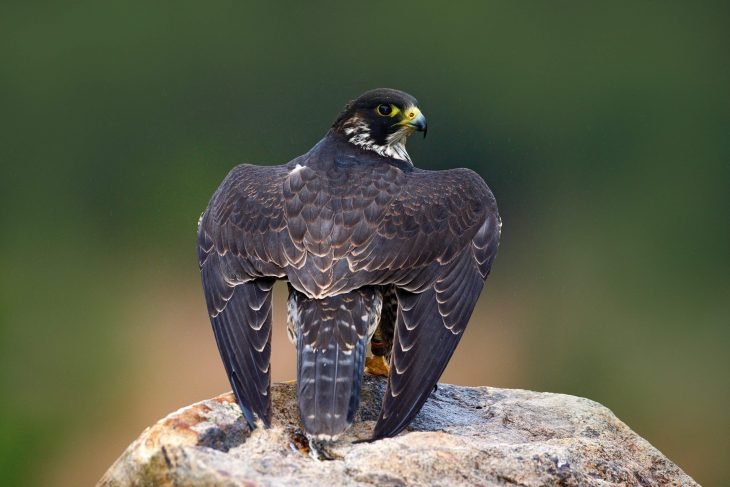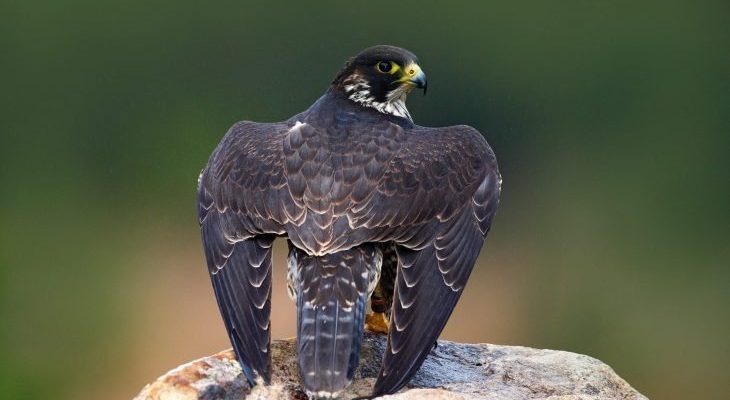
Whether you’re a birdwatching enthusiast or simply curious about nature’s wonders, learning about the Peregrine Falcon is like opening a window into a world of remarkable adaptations and incredible stories. From their breathtaking hunting techniques to their impressive migration patterns, there’s so much to discover. So grab your favorite drink, get comfy, and let’s explore these fascinating facts together!
1. The Fastest Animal on the Planet
When it comes to speed, the *Peregrine Falcon* holds the gold medal. During its hunting stoop (which is basically a high-speed dive), it can reach speeds of up to 240 miles per hour. To put that into perspective, that’s faster than a Formula 1 car! This astonishing speed allows the falcon to catch prey mid-air, often taking down birds that are completely unsuspecting.
You might wonder how they achieve such high speeds. The Peregrine Falcon has a unique body structure that includes a streamlined shape and powerful muscles, perfectly designed for rapid descent. Their pointed wings help minimize drag, allowing them to slice through the air with ease. Honestly, watching one of these birds dive is like watching a superhero in action.
2. Exceptional Vision
Have you ever tried spotting a tiny bird from a distance? It’s not easy! But for the *Peregrine Falcon*, it’s a walk in the park. They have some of the best vision in the animal kingdom, allowing them to see prey from over a mile away. Their eyesight is specially adapted to detect movement, which is crucial when hunting.
The falcon’s eyes have a special structure called a *fovea*, which enhances their visual acuity. This means they can focus on multiple objects at different distances simultaneously. Imagine having super vision that lets you pick out details from far away while also keeping an eye on your surroundings. That’s how these birds stay one step ahead while soaring through the sky!
3. Strong and Agile Hunters
When it comes to hunting, the *Peregrine Falcon* is a master strategist. They typically prefer to hunt flying birds, such as pigeons and jays. But how do they do it? Their hunting technique is impressive; they often perch high on cliffs or tall buildings, scanning the landscape for potential prey.
Once they spot a target, they launch themselves into action. The falcon uses its incredible speed and aerial acrobatics to chase down its meal. Imagine a high-speed chase in the sky, with the falcon weaving and diving, all while keeping its focus on the unsuspecting bird. It’s not just about speed; it’s also about precision and skill. Here’s the thing: their hunting success rate is around 50%, which is phenomenal for birds of prey.
4. A Remarkable Recovery Story
In the mid-20th century, *Peregrine Falcons* faced a steep decline due to the use of pesticides like DDT. Their populations plummeted as these toxic chemicals affected their ability to reproduce. This was a low point not just for the species but also for the ecosystem.
But here’s the good news: thanks to conservation efforts, including breeding programs and legal protections, these birds made a significant comeback. By the 1990s, Peregrine Falcons were taken off the endangered species list. It’s a great example of what can happen when humans work together to protect wildlife. Just think about it: a bird once on the brink of extinction is now soaring gracefully across our skies, thanks to dedicated conservation efforts.
5. Unique Migration Patterns
If you’ve ever wondered how far birds travel during migration, the *Peregrine Falcon* offers some truly impressive stats. These birds are known for their long-distance migrations, covering thousands of miles each year. For instance, some populations migrate between North America and South America, a journey of up to 15,000 miles!
What’s fascinating is how they navigate. They use a combination of instinct, landmarks, and even the position of the sun. It’s like they have an internal GPS system! When they are ready for migration, they gather in groups, often stopping at certain locations along the way to rest and refuel. These migratory habits not only showcase their endurance but also highlight the importance of conserving their habitats.
6. Distinctive Physical Features
The *Peregrine Falcon* is easily recognizable, thanks to its stunning appearance. With a blue-gray back, barred white underparts, and distinctive black markings on its face, it’s a striking bird. Male falcons, or tiercels, are generally smaller than females, which is pretty unusual in the bird world.
One of the most striking features is their *mustache*-like markings, which help reduce glare from sunlight. This is super helpful when they’re hunting, as it allows them to see their prey better. Picture it like wearing sunglasses! Their sharp talons and powerful beak are perfectly suited for catching and consuming prey, illustrating just how well-adapted they are to their role as apex predators.
7. Complex Vocalizations
When you think of birds, you might picture them chirping or singing, but *Peregrine Falcons* have a variety of vocalizations that serve different purposes. Whether it’s communicating with a mate, warning intruders, or calling to their young, these vocalizations are crucial for their survival.
Their calls range from *a series of rapid, harsh cackles* to softer coos when they’re in a more relaxed setting, like during courtship. Each sound has its own meaning, almost like a secret language. If you ever get a chance to hear them in the wild, you might be surprised by how expressive they can be. It’s not just about looks—their vocal prowess is part of what makes them such incredible creatures!
8. Important Role in Ecosystems
Every species plays a role in its ecosystem, and the *Peregrine Falcon* is no exception. As apex predators, they help regulate bird populations, keeping ecosystems balanced. By feeding on weaker or sick individuals, they ensure that prey populations remain healthy.
Their presence also indicates a healthy environment. In regions where Peregrine Falcons thrive, it’s often a sign of a robust ecosystem. So, when you spot one soaring overhead, it’s not just a beautiful sight; it’s a reminder of nature’s interconnected web of life. It’s fascinating to think about how one species can impact the health of an entire habitat.
9. Love and Family Life
When it comes to love, *Peregrine Falcons* are quite the devoted partners. They usually mate for life and are known for their elaborate courtship displays, which can include aerial dances and food offerings. This bond is essential, especially during the breeding season.
Once they mate, they work together to build a nest, often choosing high cliffs or ledges to keep their eggs safe from predators. The female lays about 3 to 4 eggs, and both parents take part in incubating them. Watching the little chicks hatch and grow is a delightful process, showcasing the family dynamics of these magnificent birds. It’s heartwarming to see how they nurture and protect their young, reinforcing the idea that love in the animal kingdom is just as powerful as it is in ours.
10. Fascinating Adaptations
The *Peregrine Falcon* boasts an array of remarkable adaptations that help it survive in various environments. For instance, their feathers are specially designed to withstand high-speed dives. The unique shape of their wings and tail allows for exceptional maneuverability, which is crucial during hunting.
Additionally, their respiratory system is highly efficient, helping them take in more oxygen while flying at high altitudes. This means they can maintain their speed without tiring easily. That’s impressive, right? These adaptations not only showcase evolution at work but also highlight how species can thrive in diverse habitats, from urban cities to vast wilderness.
In conclusion, the Peregrine Falcon is a symbol of resilience and beauty in nature. With their incredible speed, sharp vision, and vital role in ecosystems, they remind us of the wonders of the natural world. The next time you look up and see one of these magnificent birds soaring above, take a moment to appreciate all the incredible facts that make them so special. Whether as a hunter in the skies or a symbol of conservation success, the Peregrine Falcon truly deserves its place as one of nature’s most fascinating creatures.

